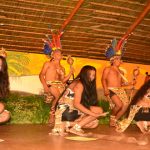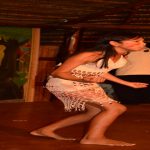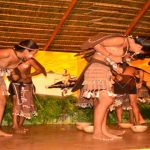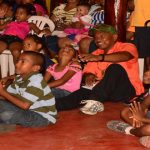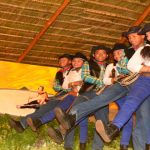Indigenous community proves language, culture not lost
AMID spectacular displays of Indigenous cuisine and talented artistry, the Amerindian community last Friday proved to a gathering of thousands that their language and culture are not lost. An array of indigenous persons draped in their native clothing dominated the celebrations of Indigenous Heritage Month at the Sophia Exhibition Site last Friday, just after sunset.
The talented artistes illustrated life in the various indigenous communities through the use of songs and poems in native languages and lengthy, but appealing ancient stories about their villages.
Leading the show was the Surama Cultural Group that comprises the Makushi tribe from Surama Village, which is nestled in North Rupununi. Decked in their colourful head dresses and fine jewellery made of beads and feathers, the group performed a captivating cassava-processing dance in the Makushi language, illustrating the making of cassava dishes in the Surama Village.
The village is blessed with huge rivers and wildlife in its open savannahs and is home to nearly 500 people. Nestled in the village is the Surama Eco-Lodge that offers guests an opportunity to have an experience of a lifetime in a region that has been largely untouched by tourism. The village is made up of a few communities where Wapishana and Patamona are spoken besides Makushi.
While being the leading participants at this year’s Indigenous Heritage Month observances, the Moraikabai villagers from Region 5, (Mahaica-Berbice) came second in dominating the stage as its Wakaraiyo Cultural Group displayed traditional Arawak dances, the Mari-Mari and Koroberu.
Moraikabai is the only indigenous village in Region 5 and is situated about two and a half miles up the Mahaicony Creek and has a population of 1,500.
They are chiefly descendants of the Arawak tribe, and are largely Christians, being either Anglicans, Pentecostals or members of the Church of Christ.
Other excellent village displays were exhibited by the Katiwau Cultural Group, the Karandanau Cultural Group, the Masekeneri Cultural Group and Paramakatoi and St. Cuthbert’s Mission villagers.


